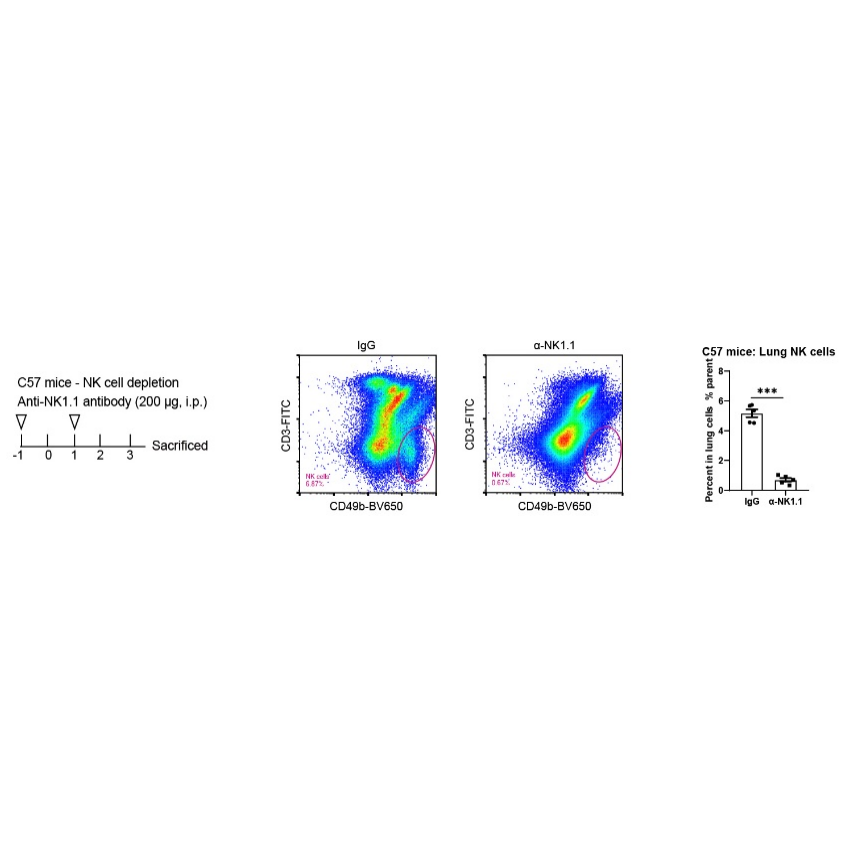NK cell depletion efficacy of S0B0998 in C57 mice
Product Details
Product Details
Product Specification
| Host | Mouse |
| Antigen | NK1.1 |
| Synonyms | Killer cell lectin-like receptor subfamily B member 1B allele A; CD161 antigen-like family member B; Lymphocyte antigen 55b (Ly-55b); NKR-P1 34; Natural killer cell surface protein NKR-P1B allele SJL/BALB (NKR-P1B); CD161b; Klrb1b; Ly55b; Nkrp1b |
| Location | Membrane |
| Accession | P27812 |
| Clone Number | S-R480 |
| Antibody Type | Mouse mAb |
| Isotype | Mouse IgG2a, k |
| Application | In vivo NK cell depletion |
| Reactivity | Ms |
| Purification | Protein A |
| Concentration | 5 mg/ml |
| Purity | >95% Determined by SDS-PAGE |
| Endotoxin | <2EU/mg |
| Conjugation | Unconjugated |
| Physical Appearance | Liquid |
| Storage Buffer | PBS pH7.4, containing no preservative |
| Stability & Storage | 12 months from date of receipt / reconstitution, 2 to 8 °C as supplied |
Background
NK1.1 is a surface antigen that is expressed on the cell membrane as a disulfide-linked homodimer. It is also known as CD161 or Ly-55 and is encoded by the NKR-P1B/NKR-P1C gene. NK1.1 is primarily found on the surface of NK cells and NK-T cells in certain mouse strains, such as C57BL/6, FVB/N, and NZB, but not in AKR, BALB/c, CBA/J, C3H, DBA/1, DBA/2, NOD, SJL, and 1291. The expression of NK1.1 has been associated with the lysis of tumor cells in vitro and the rejection of bone marrow allografts in vivo. Additionally, NK1.1 plays a role in NK cell activation, IFN-γ production, and cytotoxic granule release. In mouse models, NK1.1 is used as a marker for natural killer (NK) cells, which are a type of lymphocyte that plays a key role in the innate immune system. NK cells are capable of destroying target cells without prior sensitization and exhibit cytotoxicity towards certain tumor cells and cells infected with viruses. They are also involved in the regulation of antibody-producing B cells. NK1.1 is also sometimes used as a marker for a subset of T cells that have characteristics of both T cells and NK cells, known as NKT cells. These cells can recognize lipid antigens presented by CD1d, a molecule more commonly associated with antigen presentation to NK cells than to T cells.
Picture
Picture
Validation Data



